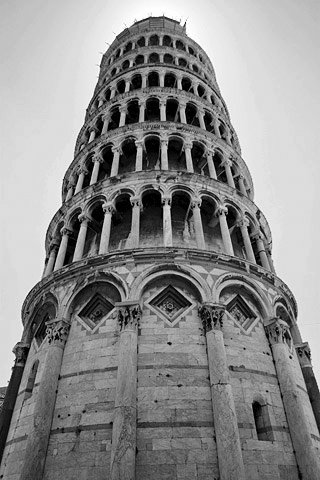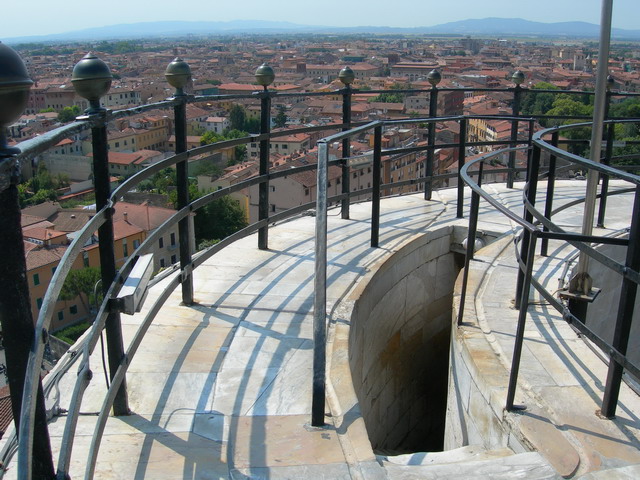Leaning Tower of Pisa

The Leaning Tower of Pisa or simply the Tower of Pisa is the campanile, or freestanding bell tower, of the cathedral of the Italian city of Pisa, known worldwide for its unintended tilt to one side. It is situated behind the Cathedral and is the third oldest structure in Pisa's Cathedral Square (Piazza del Duomo) after the Cathedral and the Baptistry. The tower's tilt began during construction, caused by an inadequate foundation on ground too soft on one side to properly support the structure's weight. The tilt increased in the decades before the structure was completed, and gradually increased until the structure was stabilized (and the tilt partially corrected) by efforts in the late 20th and early 21st centuries.
The height of the tower is 55.86 metres (183.27 feet) from the ground on the low side and 56.67 metres (185.93 feet) on the high side. The width of the walls at the base is 2.44 m (8 ft 0.06 in). Its weight is estimated at 14,500 metric tons(16,000 short tons).The tower has 296 or 294 steps; the seventh floor has two fewer steps on the north-facing staircase. Prior to restoration work performed between 1990 and 2001, the tower leaned at an angle of 5.5 degrees,but the tower now leans at about 3.99 degrees.This means that the top of the tower is displaced horizontally 3.9 metres (12 ft 10 in) from where it would be if the structure were perfectly vertical.
 |
| Leaning Tower of Pisa |
 |
| View looking up |
 |
| Entrance door to the Leaning Tower of Pisa |
 |
| Plaque in memory of Galileo Galilei's experiments on the Leaning Tower of Pisa |
 |
| External loggia on the Leaning Tower of Pisa |
 |
| Inner staircase from sixth to seventh floor on the Leaning Tower of Pisa |
 |
| Inner staircase from seventh to eighth (the top) floor on the Leaning Tower of Pisa |
 |
| View from the top |
 |
| "Assunta" bell on the Leaning Tower of Pisa |
 |
| "Pasquareccia" bell on the Leaning Tower of Pisa. |
 |
| View, looking down from the top |
 |
| Leaning Tower of Pisa at night |
 |
| Leaning Tower of Pisa at night |
Data from













































